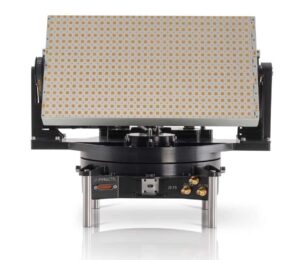 Get SAT, a developer of lightweight satellite communication (SATCOM) terminals for UAVs (unmanned aerial vehicles) and unmanned systems, has announced that in conjunction with AMOS satellite operator Spacecom, it has tested and demonstrated full mobile broadband satcom capabilities for ISR (Intelligence, Surveillance and Reconnaissance) applications. The tests used AMOS-17’s steerable KA-band HTS (high-throughput satellite) beams and Get SAT’s miniaturized Micro-SAT satcom terminals to create a small-footprint, high-capacity solution for deployed units.
Get SAT, a developer of lightweight satellite communication (SATCOM) terminals for UAVs (unmanned aerial vehicles) and unmanned systems, has announced that in conjunction with AMOS satellite operator Spacecom, it has tested and demonstrated full mobile broadband satcom capabilities for ISR (Intelligence, Surveillance and Reconnaissance) applications. The tests used AMOS-17’s steerable KA-band HTS (high-throughput satellite) beams and Get SAT’s miniaturized Micro-SAT satcom terminals to create a small-footprint, high-capacity solution for deployed units.
Based on a patented InterFLAT panel antenna, a miniaturized interlaced antenna combining both receive and transmit elements on one panel, and fast-tracking technologies, the Micro-SAT terminal demonstrated a return channel of over 10Mbps. The transportable 1.2-metre Ka-band hub and the capabilities of Spacecom’s AMOS-17 digital payload, which offers extensive C-Band HTS coverage as well as regional Ku-Band and steerable Ka-band HTS beams, created an ideal configuration for Communications On-The-Move applications in the Middle East, Africa, Europe and Asia.
Kfir Benjamin, CEO of Get SAT, commented: “This news is incredible for a market that is starved for secure, nimble, mobile ISR. Get SAT’s SWaP goes above and beyond current offerings. With AMOS-17’s steerable KA-band HTS beams, Get SAT’s miniaturized terminals produce extremely effective transmission and reception via a single small antenna. No longer does one have to seek miniaturized terminals for secure and reliable high data rates for tactical units using mobile platforms: we have them.”
Eran Shapiro, Director of Business and Technology Ventures at Spacecom, stated: “The test’s amazing results demonstrate how AMOS-17’s payload performance, advanced flexible digital processor platform and optimal location at 17°E add value and open new opportunities for mobile ISR users. Get SAT’s micronized terminals are changing the mobile broadband communications landscape. When coupled with AMOS-17, we bring new vectors of flexibility and possibilities to commercial and government markets, while opening new markets.”


















